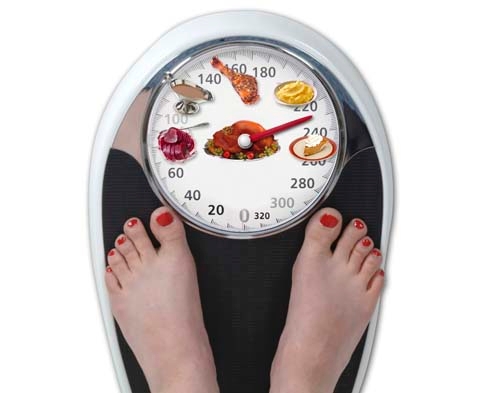Be careful with calories when eating on Thanksgiving
Planning to stuff your turkey on Thanksgiving Day? Great idea. But maybe you should avoid stuffing yourself.
It has been estimated that on this, one of the most food-centered days of the year, people consume as many as 5,000 to 6,000 calories -- close to triple the normal amount. More conservative estimates come in at about 3,000 to 4,000, which is still about double the normal amount. And at any rate, holiday gorging is really not a good idea.
"A massive amount of food at one time just overworks the body -- insulin, breakdown of fat; it just makes the systems go into high gear," said Joanna Gorman, a registered dietitian at University Medical Center. "In the general scheme of things, that's why we don't recommend one meal."
But what's the best way to avoid overeating? This may sound counterintuitive, but by eating. Don't let your excitement about the feast derail your regular eating habits.
"We should have something for breakfast," Gorman said. "We should have a regular meal plan."
"Do eat breakfast, so you're not absolutely ravenous," said Sidney Fry, a registered dietitian and assistant nutrition editor for Cooking Light magazine. "Go for a walk in the morning."
Portion control is one of the most important things to bear in mind, they said.
Gorman said to remember the MyPlate plan announced a few months ago by the United States Department of Agriculture, which recommends that half of your diet be dedicated to fruits and vegetables.
"Have a sensible amount," she said.
"That's kind of the bottom line for Thanksgiving in general," Fry said. "Enjoy it, but don't feel you have to eat it all."
Fry pointed out that even vegetables can be dietary minefields.
"One of the hard things is you often have not prepared it, so you don't know how much butter is hiding in those mashed potatoes," she said. "Some people cover their table with seasonal vegetables, but some of those are swimming in butter and cream. Any dish can be as healthy or unhealthy as you can imagine."
"Look at all the additives that we put in," Gorman said, citing the traditional green-bean casserole, with its condensed soup and fried onions high in sodium and calories. Mashed sweet potatoes are both delicious and healthful, she said, without all of the sugary glop that often is served on them.
Gorman said to beware of appetizers, which often are high in calories and fat. If you're preparing the meal, consider fruit kebabs, or salsa or bean dip with baked chips, instead of potato chips and sour-cream dips, she said.
If you're a guest in someone else's home, offer to contribute.
"Bring something that you do know is good for you and healthy, but that would add something green or colorful to the table," Fry said. "That way you know you're contributing and bringing something a little healthier to the table. This is a good time to experiment with all of those fresh seasonal vegetables -- squashes, greens, sprouts. It's a good time to try something new."
"Watch the kind of food and the portion sizes," Gorman said. "If all they have are fattening foods, I'm going to have the white meat, cut down on the gravy and just have small portions. That's why it's important to have something before I go, so I'm not starving."
Be mindful of beverages -- especially the ubiquitous eggnog, Gorman said. She noted that even relatively nutritious fruit juices carry 120 calories in eight ounces, a number that only climbs if they're mixed with alcohol.
"Cut them with sparkling water and serve it as a fancy cocktail for people who don't drink," she said.
Eat slowly, and take some time before you go back for seconds, Fry said.
Gorman pointed out that it takes the body about 15 to 20 minutes to realize it is full, so waiting can help you eat less. So can eating more slowly, perhaps by putting down your fork between bites.
"If you're right-handed, eat with your left hand," she said. "It can be sort of a game we can play with ourselves."
After dinner, take a cue from your ancestors and retire from the dining room.
"When we're done eating," Gorman said, "we tend to continue to congregate there and we'll grab a second portion and munch on this and take something when we're not even really hungry. Have coffee in another room, or help somebody in the kitchen."
Fry said the calorie disparity between white and dark turkey meat isn't as pronounced as people tend to think, and that dark meat contains beneficial minerals such as iron and zinc. But Gorman said dark turkey meat is much higher in fat, with 140 calories and 4 grams of fat for three ounces of dark meat, compared with 120 calories and 1 gram of fat for three ounces of white meat.
But both reminded that you should enjoy the day -- and the dinner.
"People put time in the planning," Fry said. "It's an enjoyable time to sit and have that fellowship.
"It is a holiday and a special occasion and it's OK to take an extra bite or two, as long as you're not going to explode or put yourself over the top. Know how to stop when you're full. Pick and choose; you don't have to put everything on your plate."
"And save room for dessert," Gorman said, "because you want to have a piece of that pumpkin pie."
Contact reporter Heidi Knapp Rinella at
hrinella@reviewjournal.com or 702-383-0474.


















